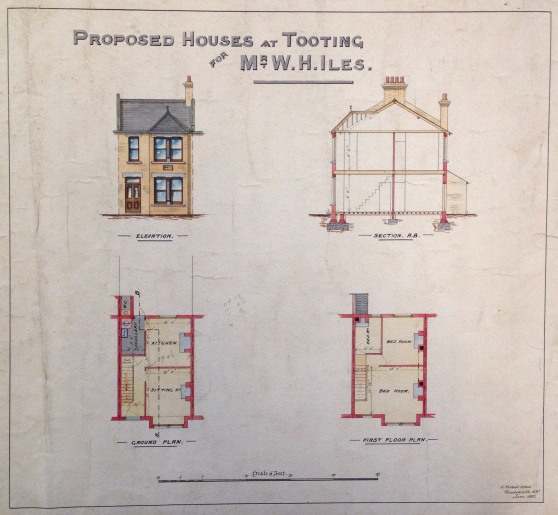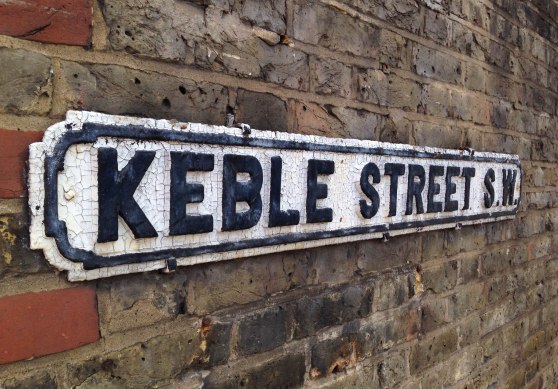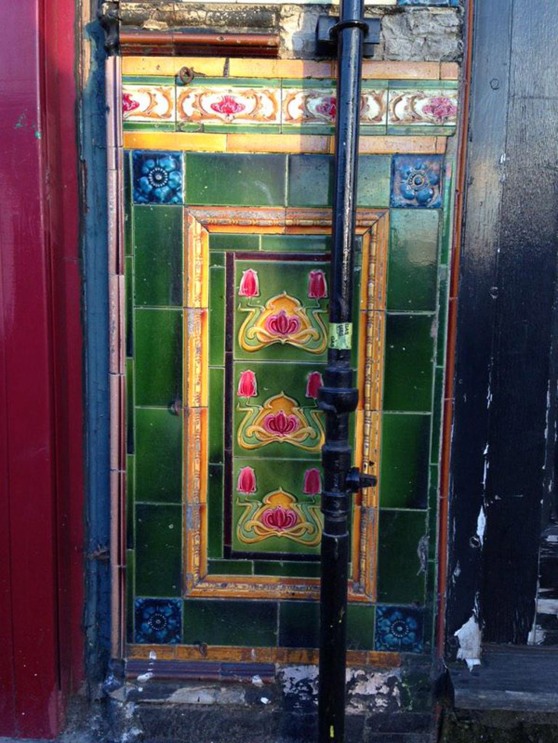


Walking through Streaham Cemetery earlier this year, Sheila and I noticed a woman quietly tending a grave that has always been of interest. Its quite a prominent spot in the central section near the Chapel and en route to the war memorial. Standing beside a large raised white headstone is a statue of a young boy, head bowed, hands clasped in prayer. Behind it is a frothy holly bush. A small urn on the grave reads ‘Johnnie from playmates’. He died when he was six years, nine months old and I had always wondered about him. His name was Johnnie Heavens, a name that was familiar from the parish magazines so a family that had lived in the area for some time. The woman, in her sixties told us that John was her brother and attended Smallwood School. On 6th May 1958 he had run across the road to their home on Garratt Terrace in Tooting from his Dad’s yard on the other side of the street and been killed by a car. The driver had been going slowly and just didn’t see him. A few months later, as a result of this tragic incident, Garratt Terrace became a one-way street. It was a terribly sad story but another precious nugget of information about how our neighbourhood came to be shaped the way it is.


No5 Garratt Terrace, at the Tooting Broadway end of the road was for fifty years the home of the Horwood family. Their eldest son Charles, serving as a Stoker 1st Class in the Royal Navy, died of illness in Liverpool on 14th April 1915, just one month short of his twentieth birthday. Charles is incorrectly refered to as ‘Harwood’ on the St Mary’s Church war memorial and indeed all his military records. His name is also misspelt on the war memorial in Wandsworth Cemetery on Magdalen Road where he is buried, not too far away from our man-of-the-moment Robert Sadler. How this happened is very strange given that his family lived locally for a long time after his death and would surely have been aware of the mistake. Harold Glassett and Ernest Haywood are at least two others on our war memorial who suffered the same fate.



Garratt Terrace was until 1938 the last stretch of Garratt Lane before it reached Tooting. The council then decided to shake things up and Defoe Road became Garratt Lane and its much quieter, narrower neighbour was renamed Garratt Terrace. The Horwoods suddenly went from living at 994 Garratt Lane to No5 Garratt Terrace. Its a gentle arch of terraced houses, most of them on the west side of the road. The other side is a hotchpotch of builders yards, back gardens and some new housing. One of those back yards was that of the family of Sidney Lewis whose 53 Defoe Road address became 934 Garratt Lane. Its tricky enough driving down it now so it would have been even more difficult with traffic coming from both directions. As with the Lewis family, the Horwood connection with this house lasted over half a century and they would have observed the transformation of Tooting Broadway, most notably the arrival of the Northern Line and its underground station in 1927. This is a transformation which is still going on today as builders and property developers fall over themselves in a mad scramble to refurbish old properties and any available spaces connected to them. The resident of one of the larger houses here has been bombarded with emails from a property company in China who have clearly seen the size of her extensive back garden on Google and would love to fill it with flats. The Crossrail 2 development to ease the burden on the creaking transport system may turn things upside down again and Tooting Market which dates from 1930 is currently threatened with being wiped away in the need to build a ventilation shaft. Fred died in 1947 aged 75. Elizabeth lived on with youngest son Ernest until her death in 1966. They would have known the Heavens family at No39 and all about poor Johnnie. Ernest died in February 1995 aged 84.


Frederick Horwood was born in 1872 in Battersea and assumed his father Charles’ trade of plumber. They lived at Holdernesse Road near Tooting Bec tube station. He married Annie Elizabeth Ayles and on 14th May 1895 Charles was born in Balham. For a while their homes seemed to orbit a clutch of streets between Balham and Clapham South. They were at 104 Balham Grove on 2nd August 1896 when Charles was baptised at Balham Ascension Church. In the 1901 census they were at 15 Rinaldo Road and in 1906 at 33 Balham New Road. By 1911 they had settled at 994 Garratt Lane Tooting. Charles was 15 and had two siblings, May who was 13 and 8 year old Edward. Another son Ernest was born later that year, 11th November 1911, giving him the unforgetable birthdate of 11-11-11.

His naval record indicates that Charles signed up on 19th August 1913 for a twelve year period. His occupation is listed as a metal engraver. His character is listed as very good though he did spend ten days in the cells for an unspecified misdemeanour logged on New Year’s Eve 1913 – perhaps overdoing his celebrations. From May to August 1914 he served as a stoker on HMS Antrim where he may have come across John Henry Wood. In December 1912 this ship became the flagship of the 3rd Cruiser Squadron of the Second Fleet. She was assigned to the Grand Fleet in mid-1914 as the Navy mobilised for war and spent much of its time reinforcing the patrols near the Shetland and Faroe Islands. This was sandwiched between two periods stationed at ‘HMS Pembroke’. That was the name given to Royal Navy ‘Shore Establishments’ which were located at various points around the country such as Chatham, Sheerness, Great Yarmouth, Grimsby and Lerwick. Men would return there between ships for leave, undertake training courses and administrative duties . Some of them were initially actual ships, but that was gradually phased out.

A note on the bottom of this record indicates that on 14th April 1915 Charles Frederick Horwood died aged nineteen in 1st Western Hospital, Fazakerley, Liverpool from ‘lymphosarcoma of the mediastinum’, a rare type of cancer mostly affecting young adults. Nowadays there would be an 80% chance of recovery. The hospital Charles died in is now The University Hospital, Aintree, not to far from where The Grand National takes place.




































































































